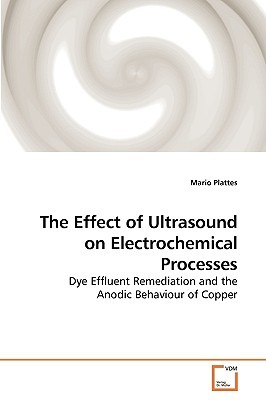
- We will send in 10–14 business days.
- Author: Mario Plattes
- Publisher: VDM Verlag
- ISBN-10: 3639141431
- ISBN-13: 9783639141436
- Format: 15.2 x 22.9 x 1.5 cm, softcover
- Language: English
- SAVE -10% with code: EXTRA
The Effect of Ultrasound on Electrochemical Processes (e-book) (used book) | bookbook.eu
Reviews
Description
The effect of ultrasound on dye degradation and the anodic behaviour of copper was studied. Dye degradation was studied by bulk sonolysis and bulk electrolysis of aqueous solutions containing three model dyes. Electrolytic dye degradation was achieved using potassium chloride, potassium sulphate, and potassium nitrate as electrolytes. Electrochemical degradation was fastest using potassium chloride since chlorine and hence hypochlorite (bleach) were generated during electrolysis. Ultrasound was found to degas chlorine and this resulted in slow sonoelectrochemical degradation rates. This was not the case when potassium sulphate and potassium nitrate were used as electrolyte and the sonoelectrochemical process revealed a synergistic effect of ultrasound and electrochemistry during dye degradation. This synergistic effect was a result of the improved mass transport during sonication. The electrochemistry of copper was studied by anodic polarisation of a copper electrode and the effect of ultrasound upon the voltammetry and chronoamperometry of copper was established. Anodic dissolution of copper was found to be promoted by sonication.
EXTRA 10 % discount with code: EXTRA
The promotion ends in 16d.12:04:32
The discount code is valid when purchasing from 10 €. Discounts do not stack.
- Author: Mario Plattes
- Publisher: VDM Verlag
- ISBN-10: 3639141431
- ISBN-13: 9783639141436
- Format: 15.2 x 22.9 x 1.5 cm, softcover
- Language: English English
The effect of ultrasound on dye degradation and the anodic behaviour of copper was studied. Dye degradation was studied by bulk sonolysis and bulk electrolysis of aqueous solutions containing three model dyes. Electrolytic dye degradation was achieved using potassium chloride, potassium sulphate, and potassium nitrate as electrolytes. Electrochemical degradation was fastest using potassium chloride since chlorine and hence hypochlorite (bleach) were generated during electrolysis. Ultrasound was found to degas chlorine and this resulted in slow sonoelectrochemical degradation rates. This was not the case when potassium sulphate and potassium nitrate were used as electrolyte and the sonoelectrochemical process revealed a synergistic effect of ultrasound and electrochemistry during dye degradation. This synergistic effect was a result of the improved mass transport during sonication. The electrochemistry of copper was studied by anodic polarisation of a copper electrode and the effect of ultrasound upon the voltammetry and chronoamperometry of copper was established. Anodic dissolution of copper was found to be promoted by sonication.


Reviews